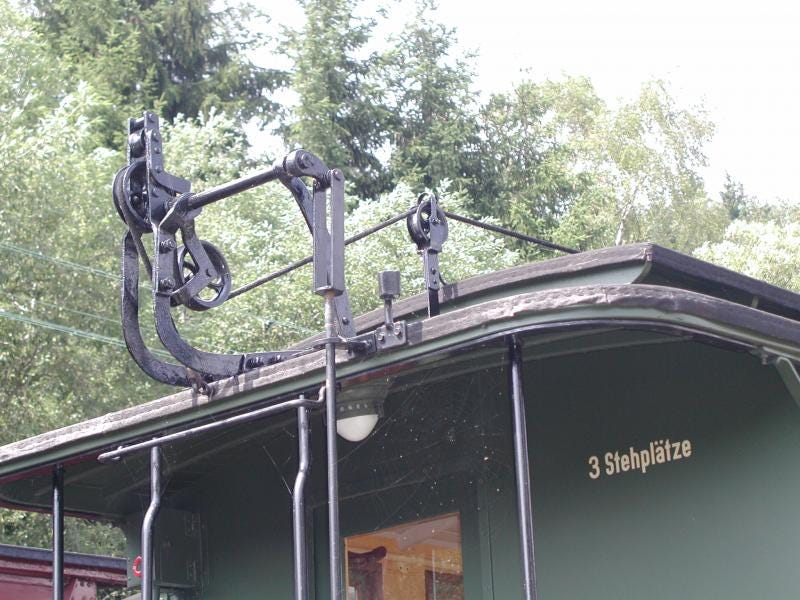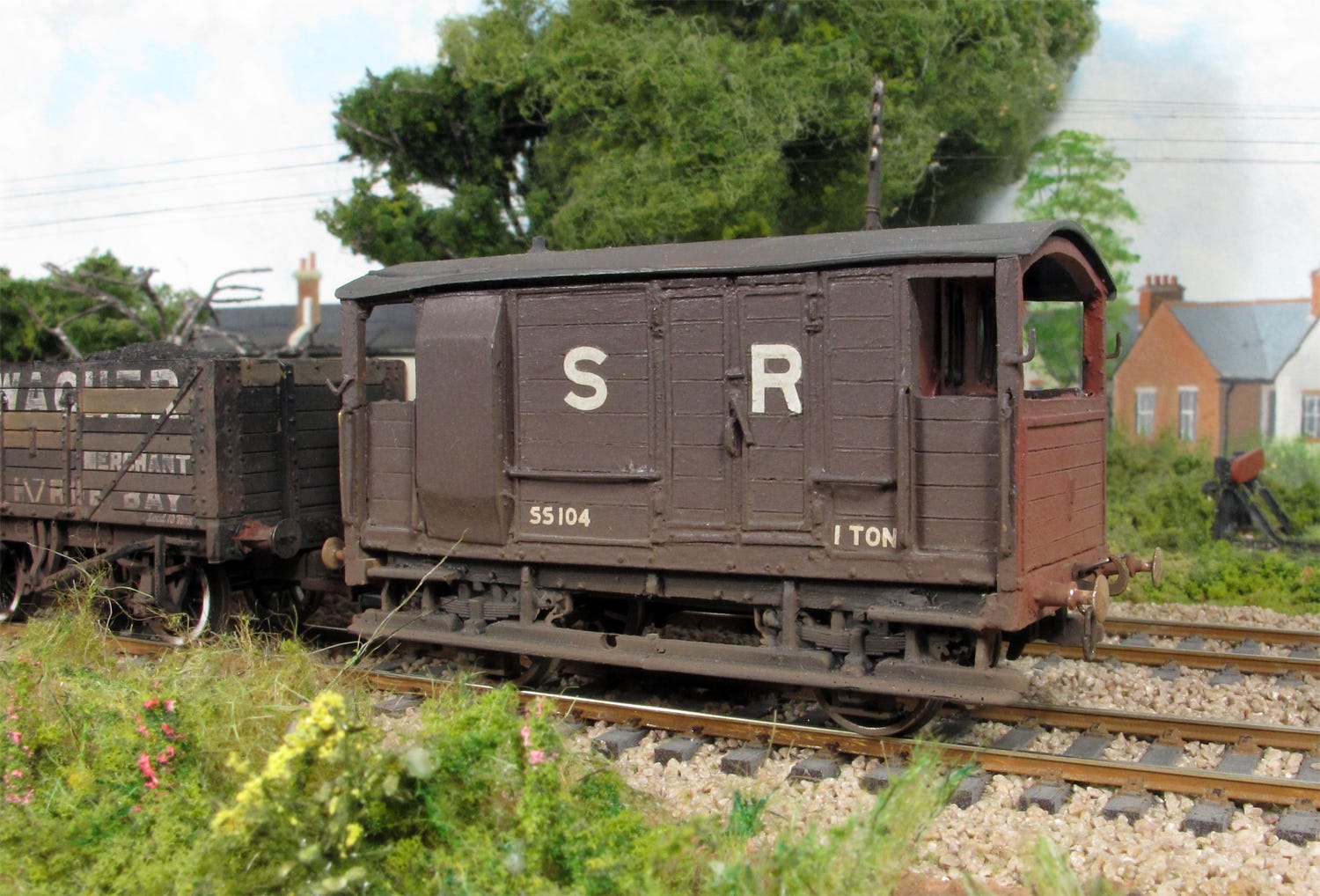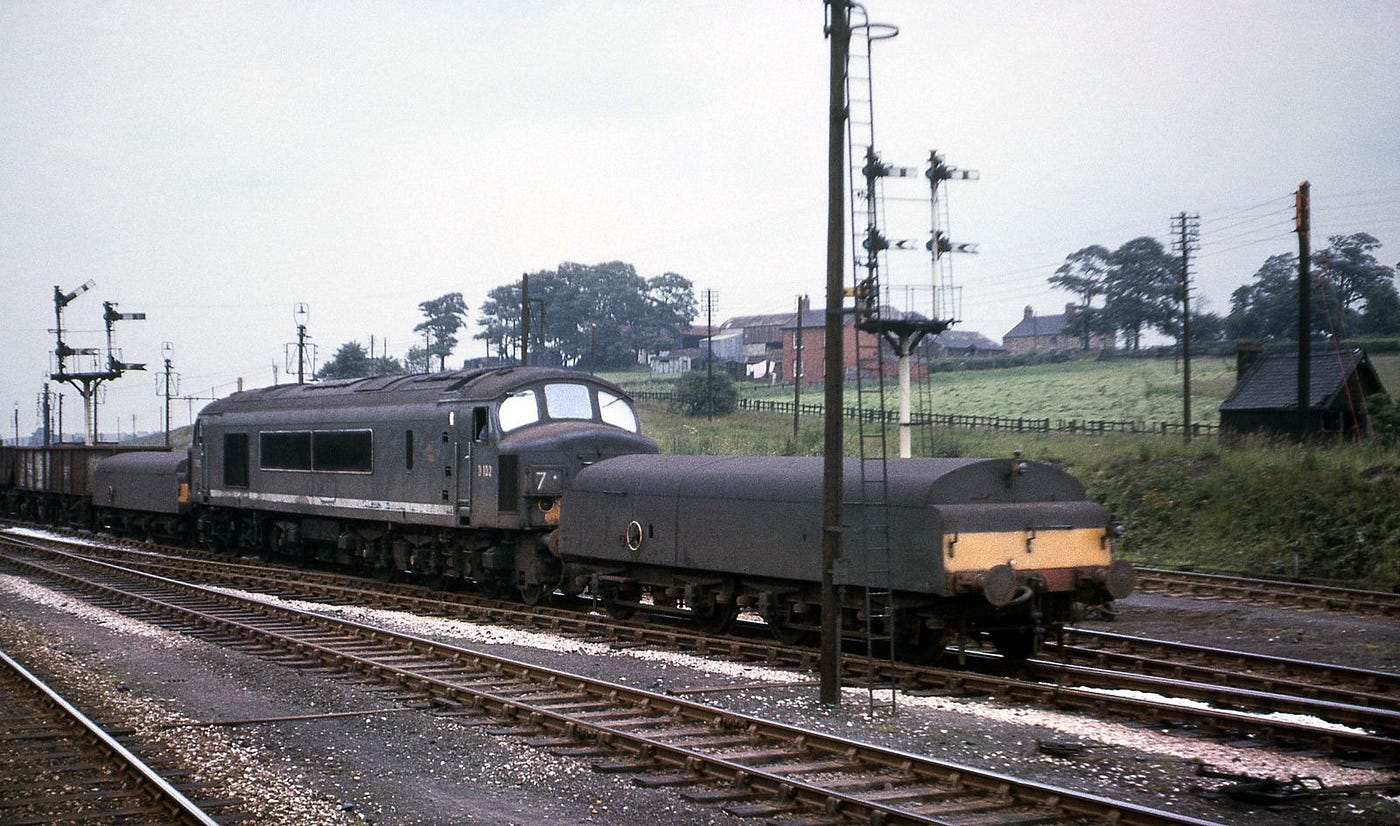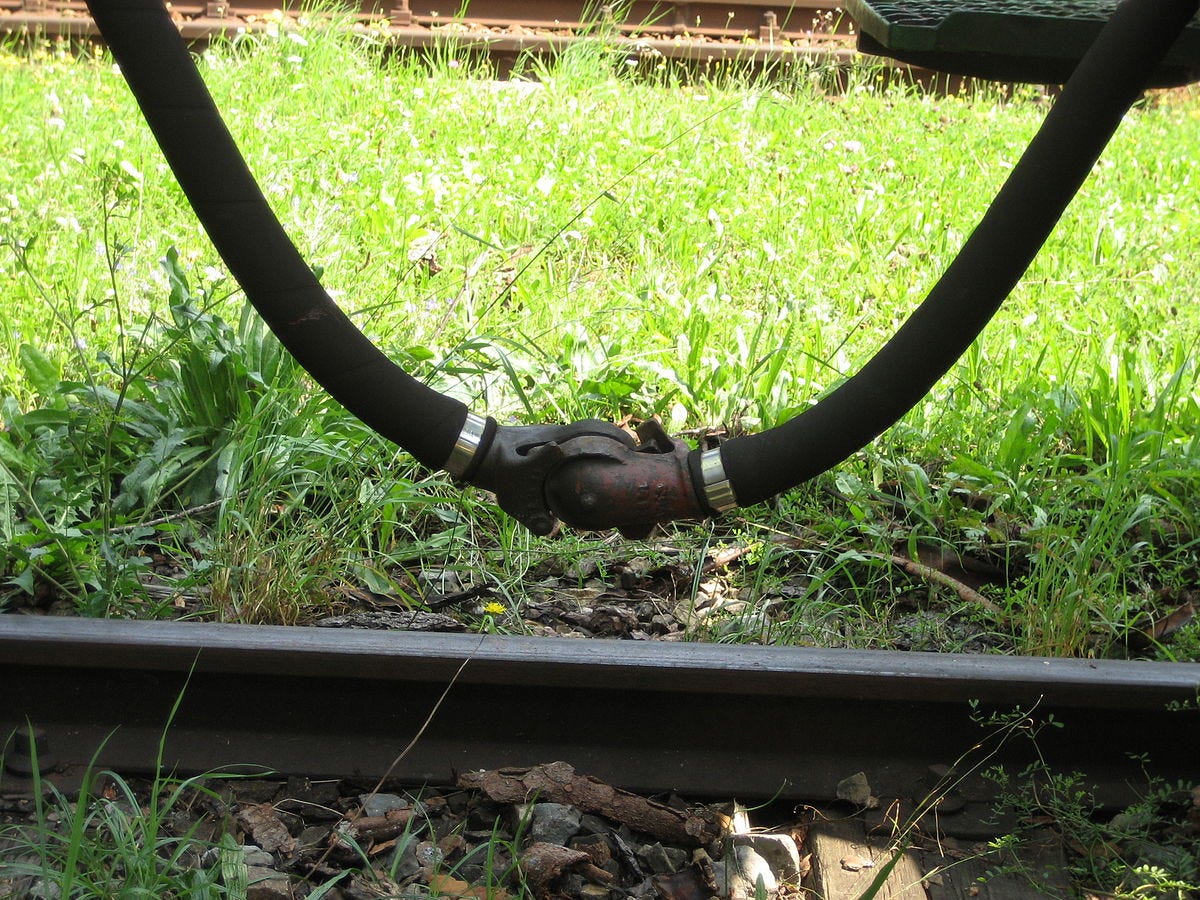A Brief History of Stopping Trains
Posted May 24, 2020
Tags: trains, braking, history
Trains can be incredibly unwieldy. Freight trains can often be a mile long, if not longer, passing at once through varying terrain, subject to conflicting forces in different sections and hauling several thousand tons at 50 miles an hour.
Stopping a moving train is a perennial problem with various solutions throughout history. By the late 1800s, there were at least 100 patents for railway braking systems.
The distance a train travels while decelerating from a given speed to rest is known as its braking distance at that speed. A large braking distance can prove to be hazardous in case of an emergency. Braking power is thus a direct limiter on how fast a train can go, even in the presence of very capable locomotives and strong, load-bearing tracks. A North Eastern Railway document from 1877 suggests that “under normal conditions it required a distance of 800 to 1200 yards to bring a train to rest when travelling at 45½ to 48½ mph”
An early solution was to simply apply enough brake power on the locomotive to bring the vehicle to stop. This initially involved screws and linkage, but was soon developed to be actuated using steam diverted from the boiler. As train speeds and loads increased, this setup turned out to be insufficient and additional brakes were installed on individual cars. It was the job of brake men to walk the length of the train, and apply brakes in each car. There were many points of failure in this system, from non-uniform forces across the train to even bigger concerns such as the brake man missing signal to brake from the locomotive.
Continuous Braking
Continuous braking is a system of brakes setup throughout a train and connected such that they can all be engaged and disengaged from a single point.
Early forms of continuous braking involved an elaborate system of chains running through the length of the train. However, this was pretty limited and capable of handling not more than 3–5 cars. Another design challenge was to account for the sag in pin-couplers while installing chains at the bottom of trains.
The Heberlein brake, designed in Germany, was a comparatively nifty option involving overhead cables that controlled brake clips on the wheels in each wagon. It operated similar to brakes on a bicycle. Heberlein brakes also had an interesting failsafe mechanism where the brakes were engaged by default and actively disengaged using tensile force. This ensured automatic activation if the cable snapped at any point. Heberlein brakes continue to be legal in Germany albeit with certain gauge and speed restrictions.

Heberlein brakes (source: https://forums.mylargescale.com/18-live-steam/47082-accucraft-saxonian-ik-54-0-6-0-live-steam.html)
Brake Vans, Handbrakes and Tenders
In British railways, continuous braking was used only for passenger trains while goods trains continued to rely on braking from the locomotive and a car at the end of the train called the brake van. Cabooses in American freight trains performed a similar role. These trains continued to run at slower speeds.
In addition, each car came with a handbrake that can be operated by someone on the ground. These were used for parking and to control speed as a train passed a downgrade. Continuous braking in goods trains was introduced gradually, with new “fitted” cars marshalled next to the locomotive.


A British brake van (source: https://grahammuz.com/tag/sr-25t-brake-van/); Handbrake outside a car (source: https://railgallery.wongm.com/page/contact)
Brake vans continue to be commonplace in Indian railways. In passenger trains, they have been partially repurposed to carry pets, oversize luggage, emergency equipment as well as function as a beacon with tail and side lamps to indicate to the locomotive that the train was still complete.

Brake tenders attached on both ends of a diesel locomotive (source: https://www.pinterest.co.uk/wkrzaczkowski/)
Between the 60s and 80s, with the advent of lighter diesel engines, trains needed additional brake-tenders. These were a skeuomorph of coal/water tenders required by steam engines, but designed to be low and heavy (typically weighing around 36 tons) and attached to the front of a locomotive to supplement braking force. They were eventually decommissioned as more trains came “fitted” with continuous braking.
Air and Vacuum Brakes
Modern continuous braking involves air and vacuum-operated brakes. These systems use hoses connecting all the wagons in the train, allowing brakes to be controlled using a single valve. Of course, this doesn’t come without its challenges. Upon application, as air travels along the length, brakes in cars at the head of the train engage earlier than the ones further behind, resulting in longitudinal forces on the train. This can get further complicated if the train is on a curve.
Automatic vacuum brakes resemble the Heberlein system in principle, in that they operate in a negative pressure state where the hoses contain vacuum and brakes engage in the presence of air pressure. Snapping of hoses at any point results in exposure to atmospheric pressure, in turn activating brakes throughout the train. Vacuum brakes are used in most trains today and in certain trains, they are accessible to passengers within cars for emergency braking.

A gladhand connector coupling air/vacuum hoses throughout the train (source: https://en.wikipedia.org/wiki/Gladhand_connector)
In the recent decades, air and vacuum brake architectures have changed significantly, with improved valve design, pressure exhausters and a wider gamut of braking systems at the disposal of the locomotive to be used depending on speed, terrain and load of the train. Electric locomotives employ regenerative braking, which allows reuse of braking energy when traction motors momentarily operate as generators moved by the train’s inertia.
Braking systems for trains have a long and illustrious history. While steel wheels on steel tracks greatly increase a train’s capacity to transport loads, it also limits the forces available to control velocity changes. They are hence in a constant state of development and continue to limit trains from operating at speeds they are capable of achieving — the Shinkansen Fastech 360 is not feasible for operation at its rated speed of 360km/h because of its ridiculously large (7km) emergency braking distance.
Nevertheless, trains all over the world run thousands of miles daily, and stop when they should, with very few incidents.